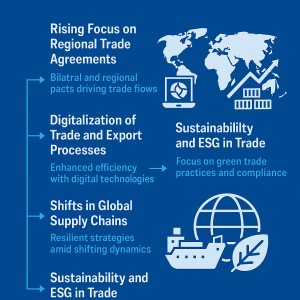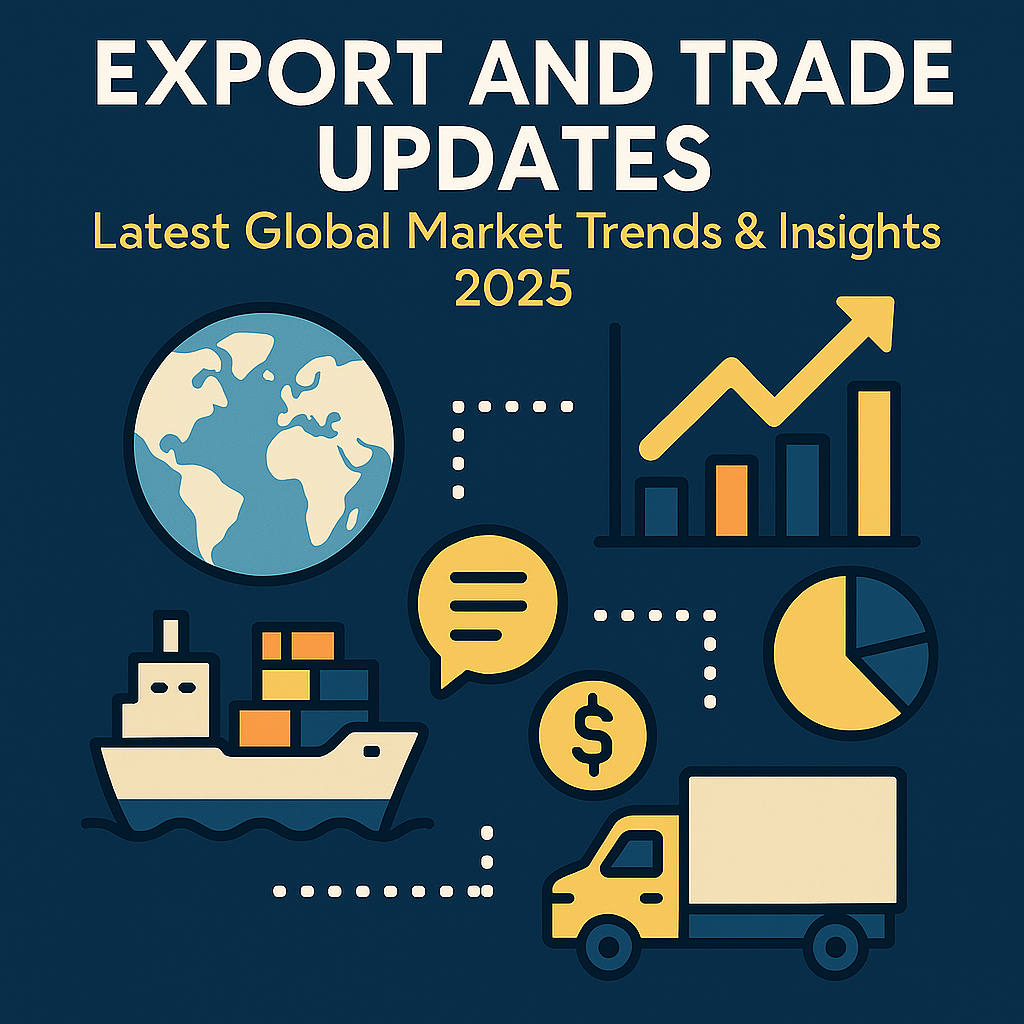 Export and Trade Updates: Latest Trends, Policies, and Market Insights 2025
Export and Trade Updates: Latest Trends, Policies, and Market Insights 2025
In an increasingly interconnected global economy, export and trade updates play a pivotal role in shaping business strategies, investment decisions, and economic forecasts. Staying informed about the latest developments in global trade policies, export trends, and market insights is essential for businesses, governments, and investors aiming to navigate the complexities of international commerce. As we move into 2025, several key trends and updates are poised to impact the global trade landscape significantly.
Rising Focus on Regional Trade Agreements
One of the most prominent developments in global trade is the rise of regional trade agreements. As multilateral trade negotiations face challenges, many countries are opting for bilateral and regional trade pacts to secure market access, reduce tariffs, and strengthen economic ties. Agreements like the Regional Comprehensive Economic Partnership (RCEP) in Asia and the African Continental Free Trade Area (AfCFTA) are reshaping trade flows by fostering intra-regional commerce and investment opportunities.
These agreements are expected to accelerate trade volumes, reduce trade barriers, and stimulate economic integration, especially in emerging markets.
Digitalization of Trade and Export Processes
The digital transformation of trade is another key trend that is revolutionizing global commerce. From digital customs clearance and blockchain-enabled supply chains to e-commerce platforms facilitating cross-border trade, digital technologies are enhancing efficiency, transparency, and security in trade processes.
In 2025, the adoption of paperless trade solutions, smart contracts, and AI-driven trade analytics will become mainstream, enabling exporters and importers to streamline operations, reduce costs, and improve compliance with international regulations.
Shifts in Global Supply Chains
The COVID-19 pandemic, geopolitical tensions, and climate-related disruptions have led businesses to reevaluate their supply chains. Companies are adopting strategies such as nearshoring, reshoring, and diversification to mitigate risks and enhance resilience.
As a result, trade flows are shifting, with countries in Southeast Asia, Latin America, and Africa emerging as alternative manufacturing and export hubs. Businesses are increasingly prioritizing agility and flexibility in their supply chain strategies to adapt to changing market conditions.
Sustainability and ESG in Trade
Sustainability has become a key concern in global trade. Governments, investors, and consumers are demanding that businesses prioritize environmental, social, and governance (ESG) considerations in their operations, including international trade practices.
Exporters are under pressure to adopt sustainable sourcing, reduce carbon footprints, and comply with green trade regulations. Initiatives such as carbon border adjustment mechanisms and sustainable trade finance are gaining momentum, influencing how goods and services are traded globally.
Evolving Trade Policies and Tariffs
Trade policies and tariffs remain dynamic as governments adjust their strategies to protect domestic industries, address trade imbalances, and respond to geopolitical shifts. Exporters must stay vigilant and monitor changes in tariffs, sanctions, and trade regulations to maintain competitiveness and ensure compliance.
Conclusion
The global export and trade landscape is undergoing profound changes, driven by technology, shifting trade agreements, sustainability demands, and evolving policies. For businesses involved in international trade, staying updated on these trends is critical to seizing opportunities, managing risks, and maintaining competitiveness in 2025 and beyond.
Companies that embrace digital trade solutions, adapt to supply chain shifts, and align with sustainable trade practices will be best positioned to thrive in the evolving global marketplace.





